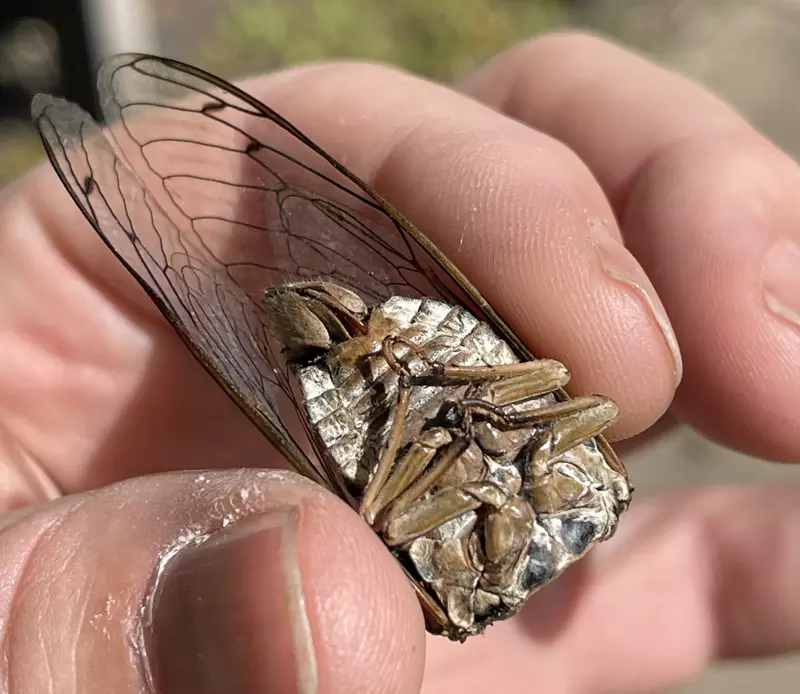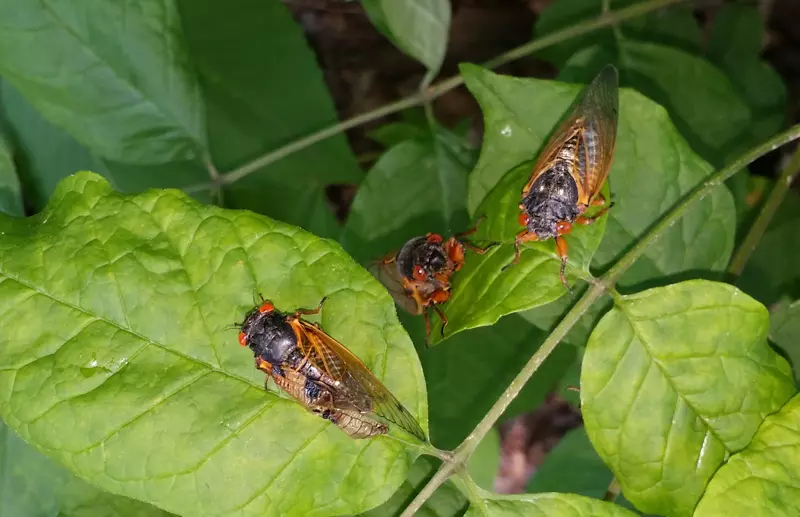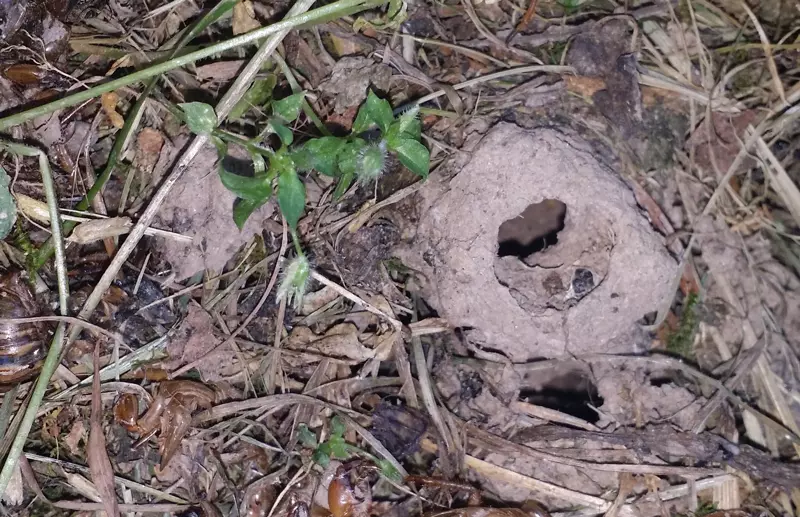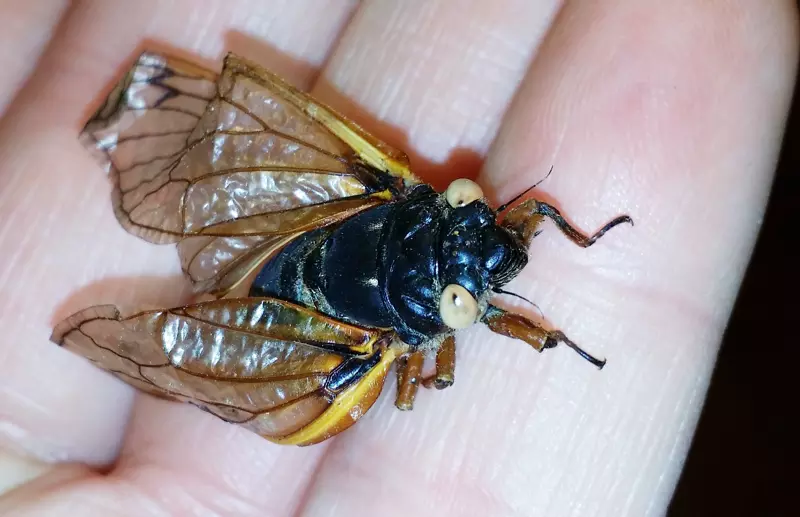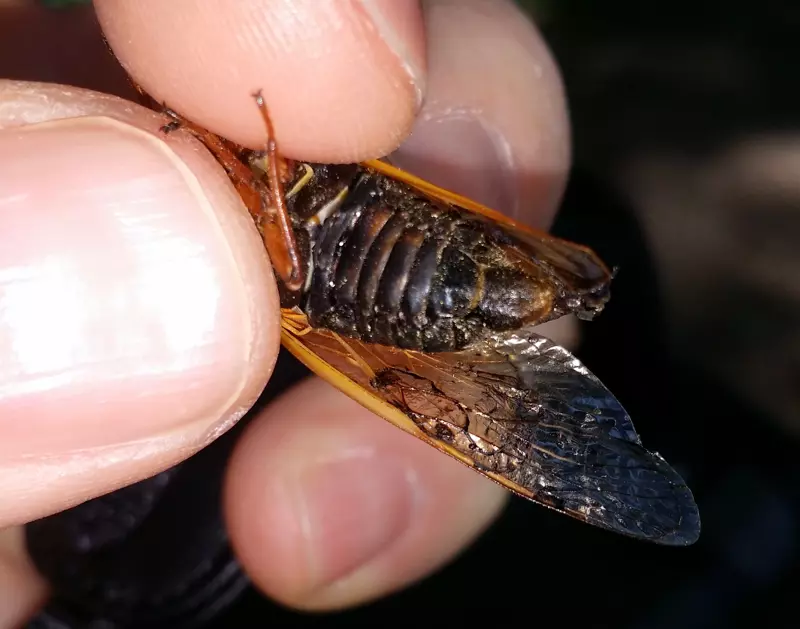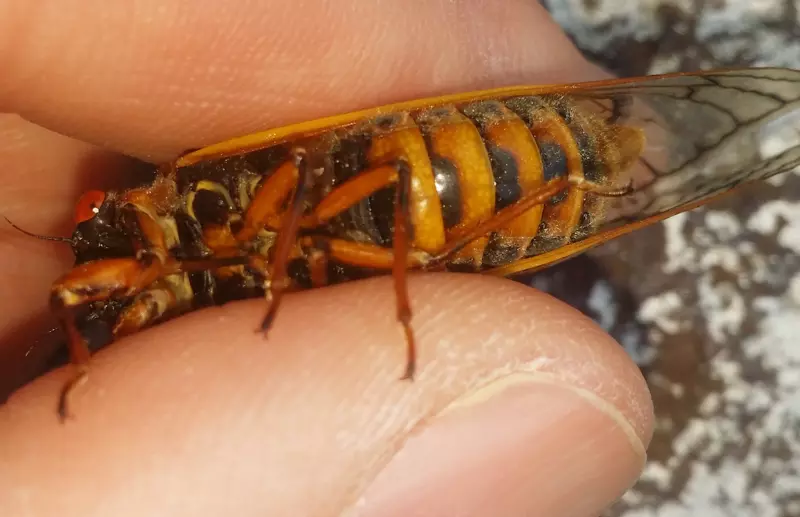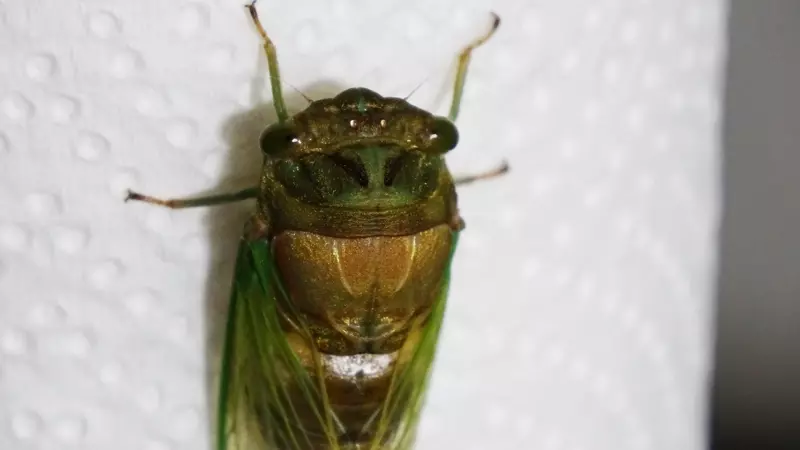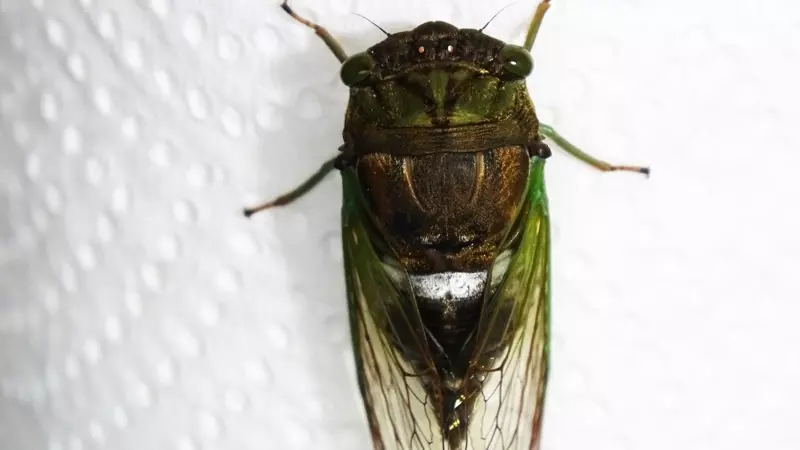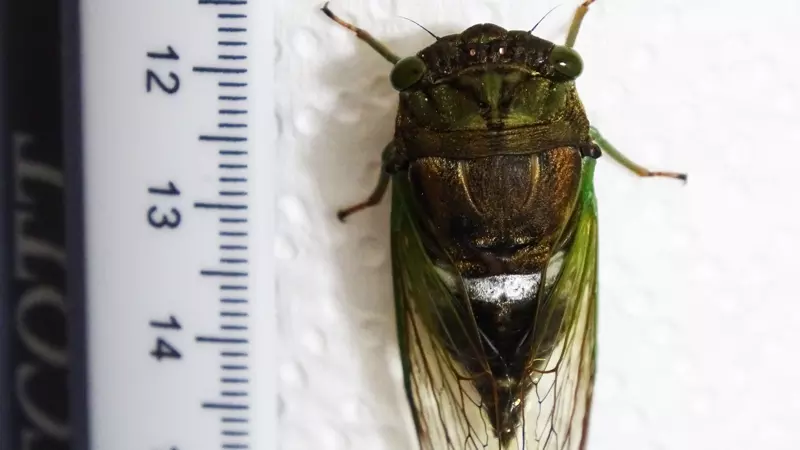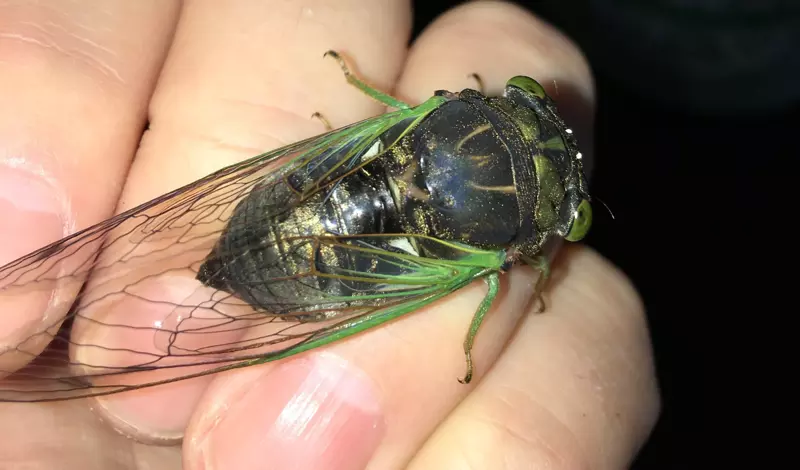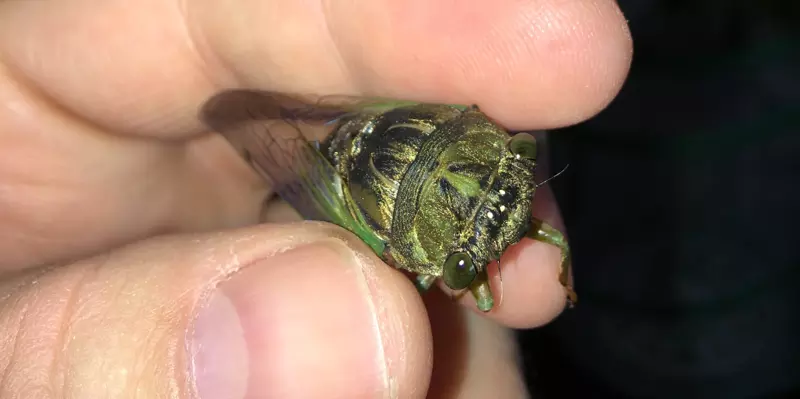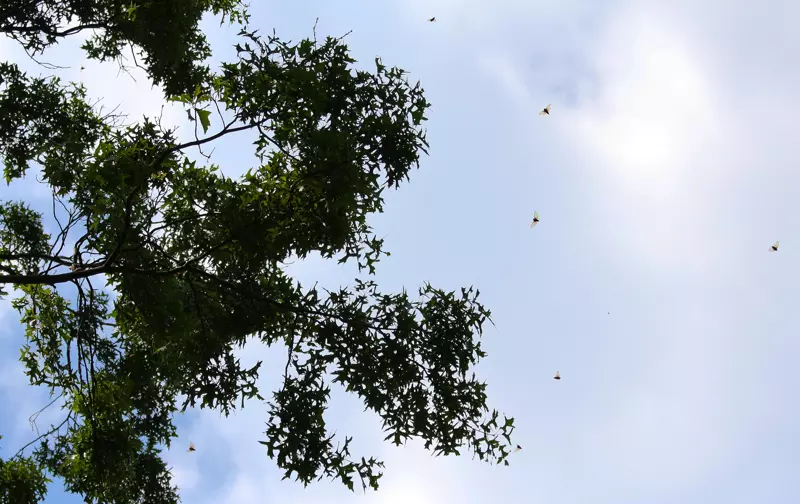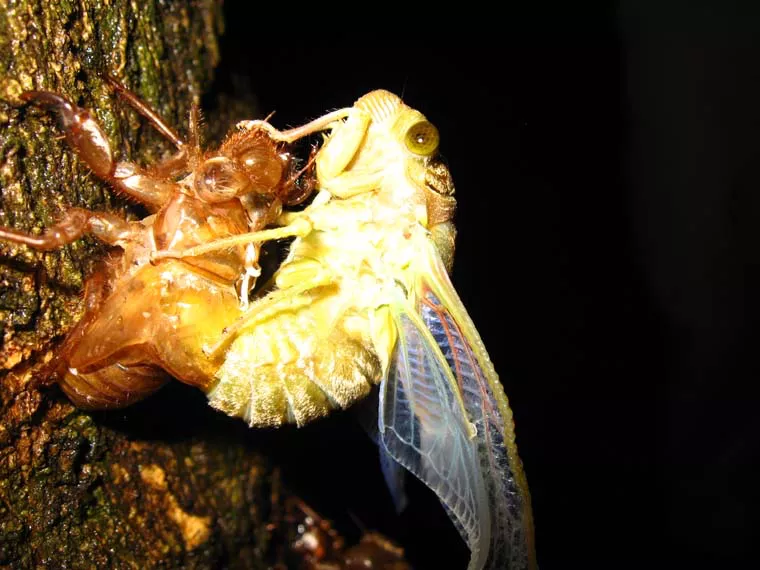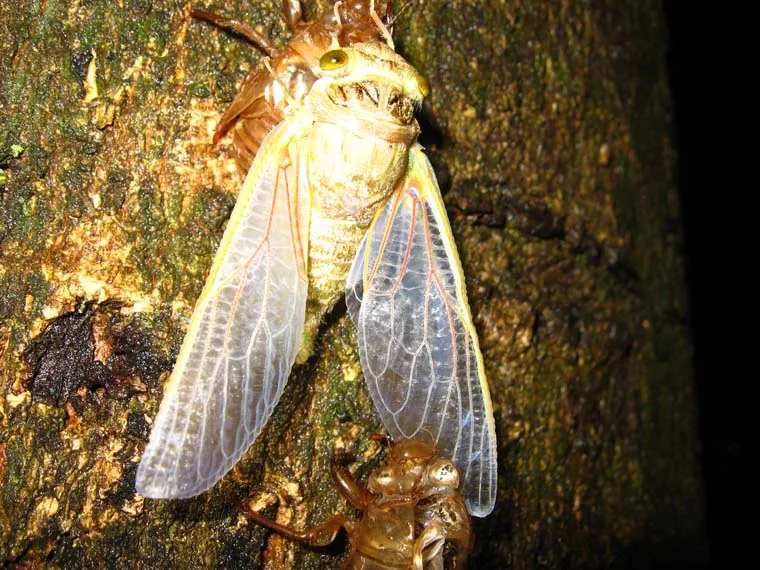Neotibicen cicadas come in a variety of pastel colors when they are in their teneral (soft) phase, when they inflate their wings and harden their bodies after molting their nymphal skins. Teneral Neotibicen can feature the colors pink, yellow and blue, in addition to pastel versions of the oranges, browns and greens we commonly see on their fully-hardened adult bodies.
Here’s an example of a male Neotibicen lyricen that was pink when it was teneral:
Here’s photos of the same cicada as a nymph and a hardened adult. See that its mesonotum are black and brown, not green and brown. It’s closer to a Neotibicen lyricen engelhardti than the Neotibicen lyricen lyricen, which has green on its mesonotum (the cicada’s shield-like back).





